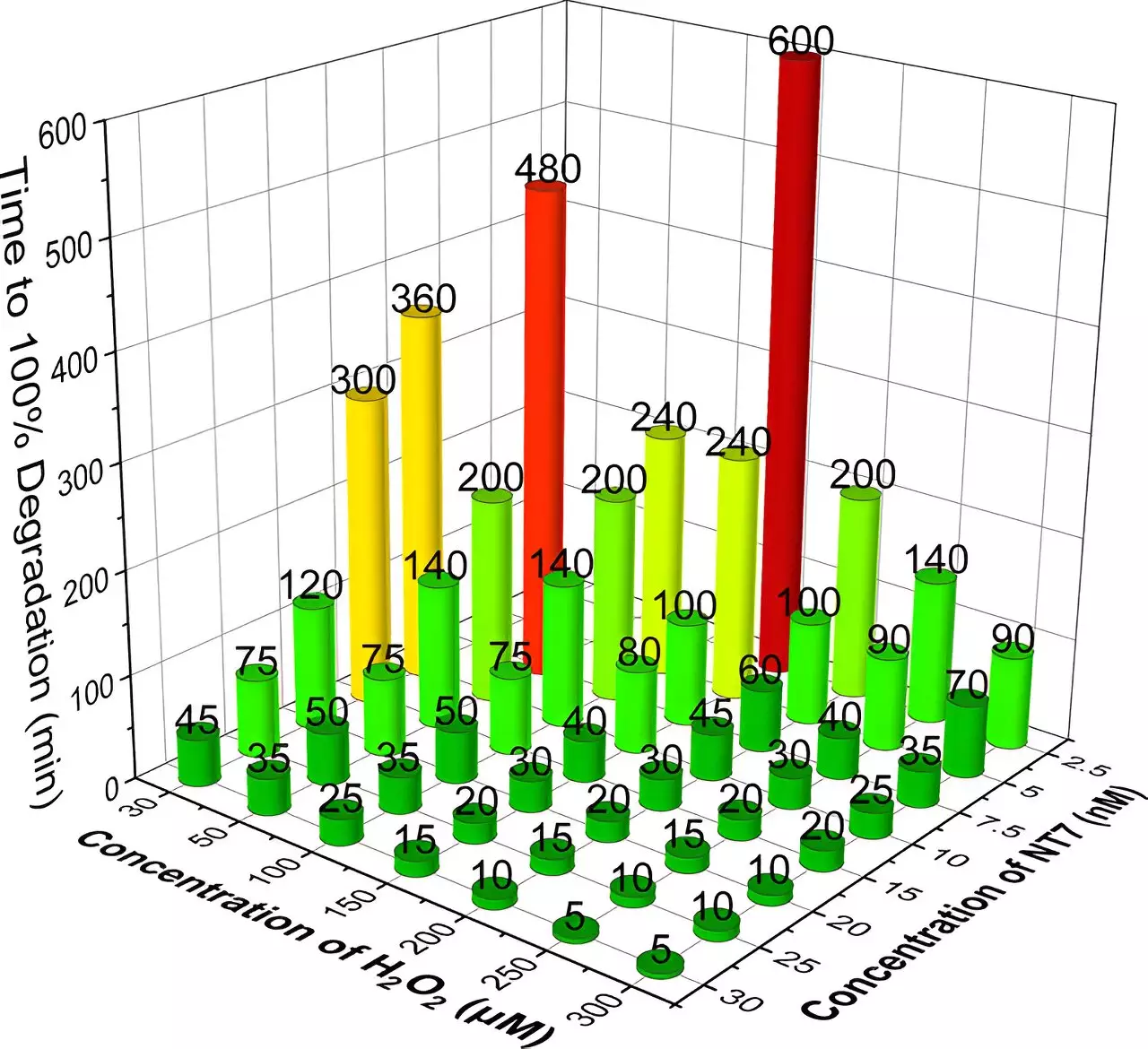The prevalence of pharmaceutical contaminants in water supplies has become a significant environmental concern. As populations grow and urban areas expand, municipal wastewater systems struggle with the accumulation of various drugs, including antibiotics, synthetic hormones, and anti-inflammatory medications. Research conducted by scientists from Carnegie Mellon University reveals that these micropollutants not only permeate wastewater treatment plants but also adversely impact aquatic ecosystems. Such contaminants can affect wildlife behavior, reproduction, and overall health, with potential implications for entire food webs. This situation necessitates a sustainable and effective strategy for the purification of our water sources.
In a groundbreaking study published in the journal *ACS Sustainable Chemistry and Engineering*, researchers have introduced a cost-effective, environmentally friendly method for treating contaminated water using a TAML (Tetramethylammonium-Ligated) catalyst and hydrogen peroxide. The TAML catalyst specifically designed for this purpose, referred to as NewTAML, has shown remarkable potency in activating hydrogen peroxide at ultra-low concentrations. By utilizing very minimal amounts of both the catalyst and hydrogen peroxide, this innovative process delivers a substantial reduction in operational costs while maintaining high efficiency.
Terry Collins, the Teresa Heinz Professor of Green Chemistry at Carnegie Mellon, emphasized the potential of this method to effectively and affordably address pharmaceutical contamination. The appeal of the TAML approach lies not only in its efficacy but also in its straightforward application. As Collins noted, the process requires merely the mixing of dilute solutions of TAML and hydrogen peroxide—a task that can easily be performed without extensive technical expertise.
Scientific Validation and Real-World Application
This research outlines systematic evaluations of the TAML catalyst’s ability to decompose six problematic drugs, which include four widely-used antibiotics, a synthetic estrogen, and a nonsteroidal anti-inflammatory drug (NSAID). Initial laboratory tests indicated impressive results, wherein after just six hours of treatment, five drugs became undetectable, and one antibiotic showed over 95% degradation. This performance was consistently replicated in various water samples, including municipal wastewater and natural water bodies.
The implications of these findings are profound. With the United States Geological Survey reporting that over 4,000 different prescription drugs can find their way into natural waterways, the urgency for effective remediation techniques has never been greater. Traditional wastewater treatments have proven insufficient in completely removing these contaminants, while more advanced processes remain cost-prohibitive for widespread implementation.
The promising results achieved with NewTAML catalyzed treatments have paved the way for further field testing, with plans underway to assess its feasibility in real-world environments. As the technology matures, the potential for commercialization has already sparked the interest of investors and startups. Sudoc, a venture focused on bringing TAML solutions to market, has recently secured $20 million in funding to propel its innovative water treatment systems—an indication of growing confidence in green technologies aimed at environmental remediation.
Collins and his team are optimistic about the transformational potential of TAML catalysts; not only do they address current contamination issues, but they also promote a broader shift towards sustainable industrial practices. Collins posits that the ease of application and affordability associated with the TAML/hydrogen peroxide method can democratize access to effective water treatment solutions that many municipalities could readily adopt, especially those in regions struggling with financial limitations to upgrade infrastructure.
As we confront the daunting challenges posed by the persistent presence of pharmaceuticals in our water supply, green technologies such as the TAML catalyst present an essential avenue for exploration and application. The Crosby Mellon team’s research underscores the urgent need for robust and deployable solutions to ensure the long-term health of our aquatic environments and, by extension, public health. By prioritizing innovative methods that are both effective and sustainable, we can make significant strides in protecting our planet’s water resources for future generations. The journey toward a cleaner, safer water supply is indeed a collaborative endeavor, one that can leverage scientific innovation to meet critical environmental needs.


Leave a Reply